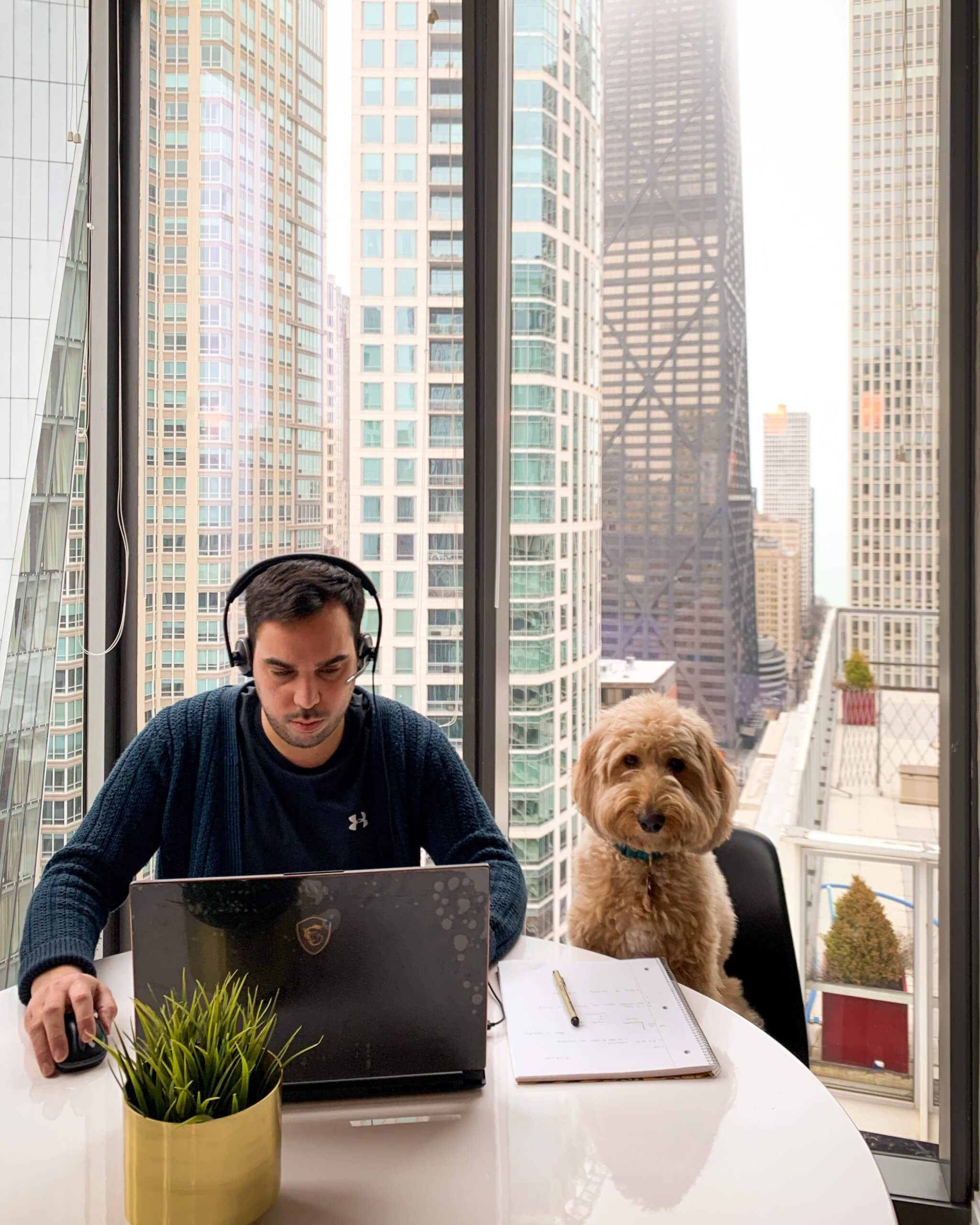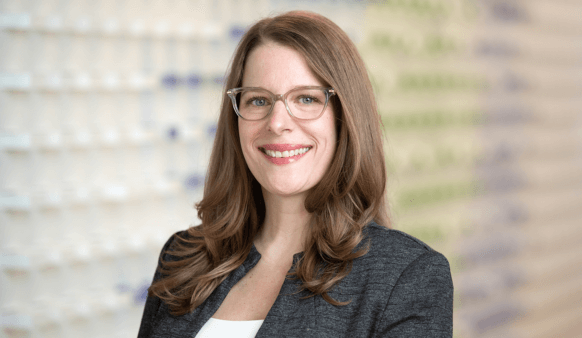Our design principals are in many ways the core of design innovation at our firm, constantly motivating us all to reimagine what’s possible. With each of their individual voices, styles, and personalities, they guide our firm through our most ambitious projects and uphold the highest standards. During Innovation Week 2020, where we celebrated 10 years of Innovation Incubator research and exploration, four of our design leaders came together to brainstorm the future of innovation as we weather the ongoing effects of the COVID-19 pandemic. In a conversation guided by associate principal Adrianna Portela that covered topics from virtual whiteboards to mindfulness, Lisa Pool, Meena Krenek, and Renny Logan shared their experiences, predictions, and words of wisdom.
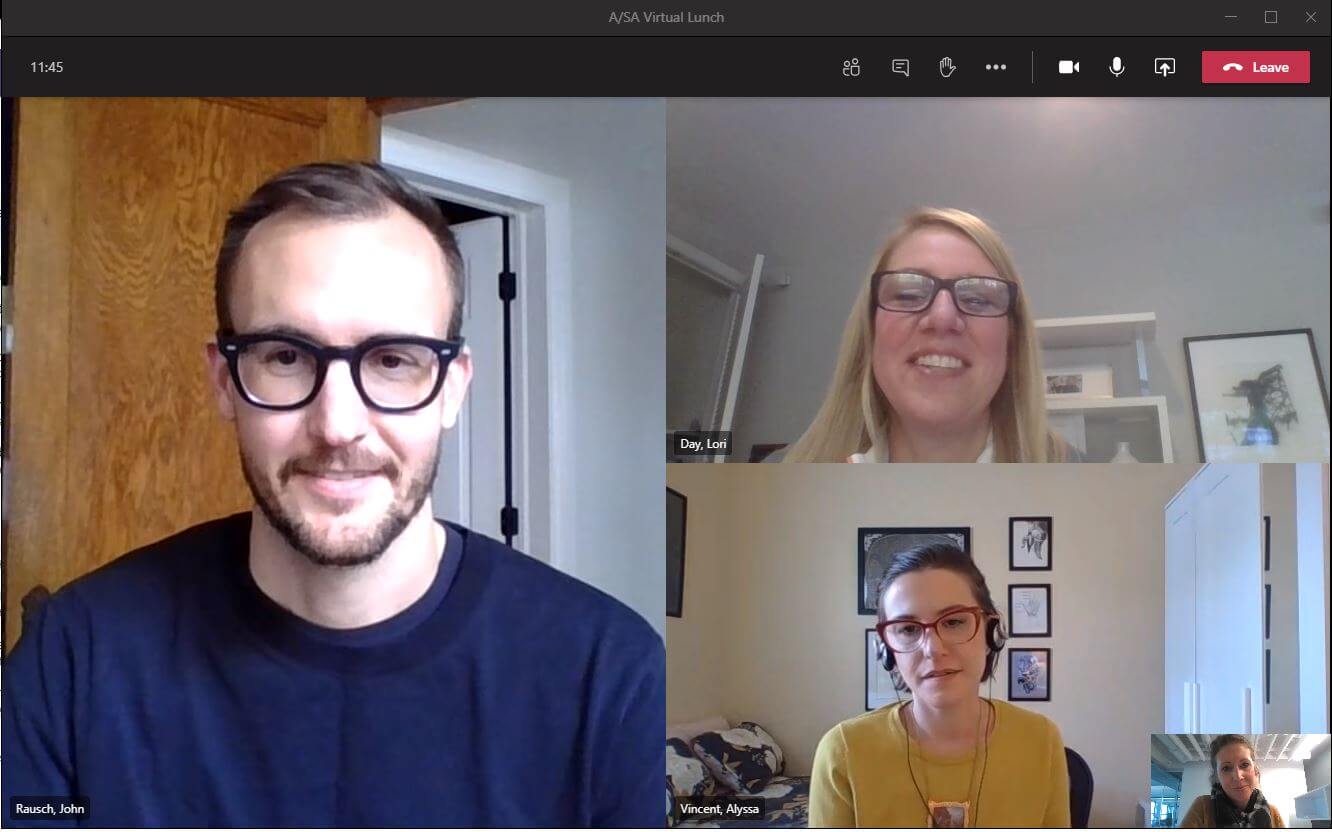
Amplifying long-distance connections
Reflecting on the onset of the COVID-19 quarantine and our transition to a work-from-home model, Lisa Pool says, “Our world suddenly got very small, yet simultaneously, our digital platform expanded connectivity further than ever before.” Being physically alone yet hyper-connected virtually meant that project teams moved to an exclusively virtual space, one that brought our entire firm much closer together despite geographic and time zone differences. Digital technologies like the Miro whiteboard facilitated new ways of thinking and making: When the pressure is on, innovation shines. “This new way of working was a radical change in so many ways, yet it made me feel more connected than ever to the firm at large,” says Krenek. This feeling was shared by all the panelists, even those who pre-pandemic believed air travel was the only way to stay connected within a global firm.
Breaking down formalities in the home office
One powerful aspect of our new virtual communication platform is that video calls and meetings connect the client’s home office with our own, creating a more familial meeting space. Seeing each other in such relaxed, casual environments has fostered an unexpected feeling of kinship. “Nowadays, I see clients outside the boardroom in their favorite sweaters, usually without makeup. I’ve met their partners or their cats as they cross the screen,” says Krenek. “There is a breaking down of barriers here, where clients really see us as confidants and members of the family.”
Quarantine measures have brought a whole new meaning to the concept of the home office, or making the office feel like home. While we used to bring photographs of our families or little knickknacks to personalize our desks, our whole self is now physically present in the home environment. “People are bringing their whole selves to work every day. We’re next to our own coffee machines, and clocking in without a commute,” says Pool, observing how much more relaxed many designers have felt toward their work since bringing it home. The home office has given designers much more flexibility in their work styles, scheduling, and, above all, ability to reflect on the work and foster the creative process. “Now, I can step away from my computer and look out the window at the trees, or at my children playing in the yard,” says Logan. “That ability to find moments of reflection has benefited my mental health enormously, and therefore all the creative output I give.”
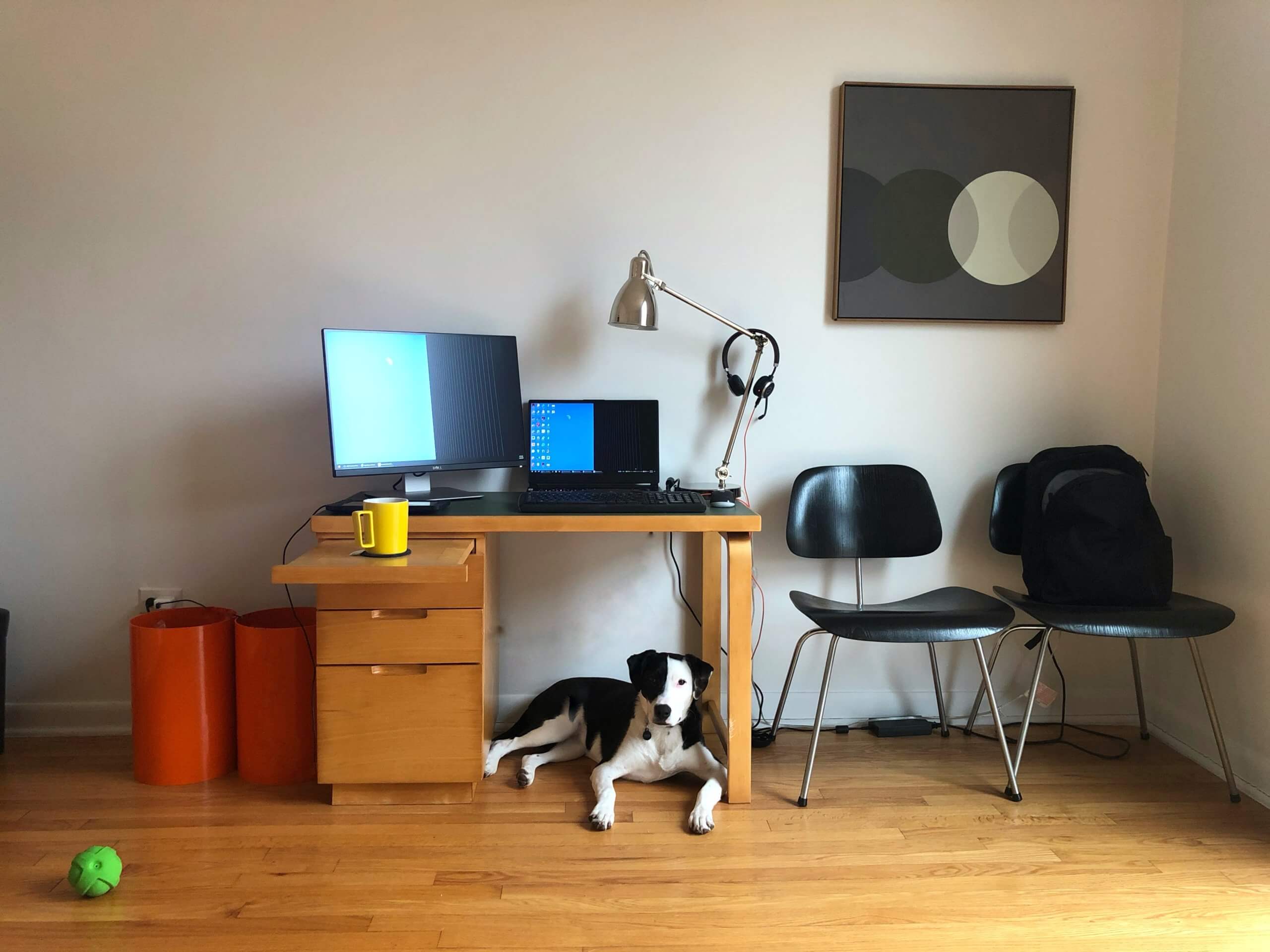
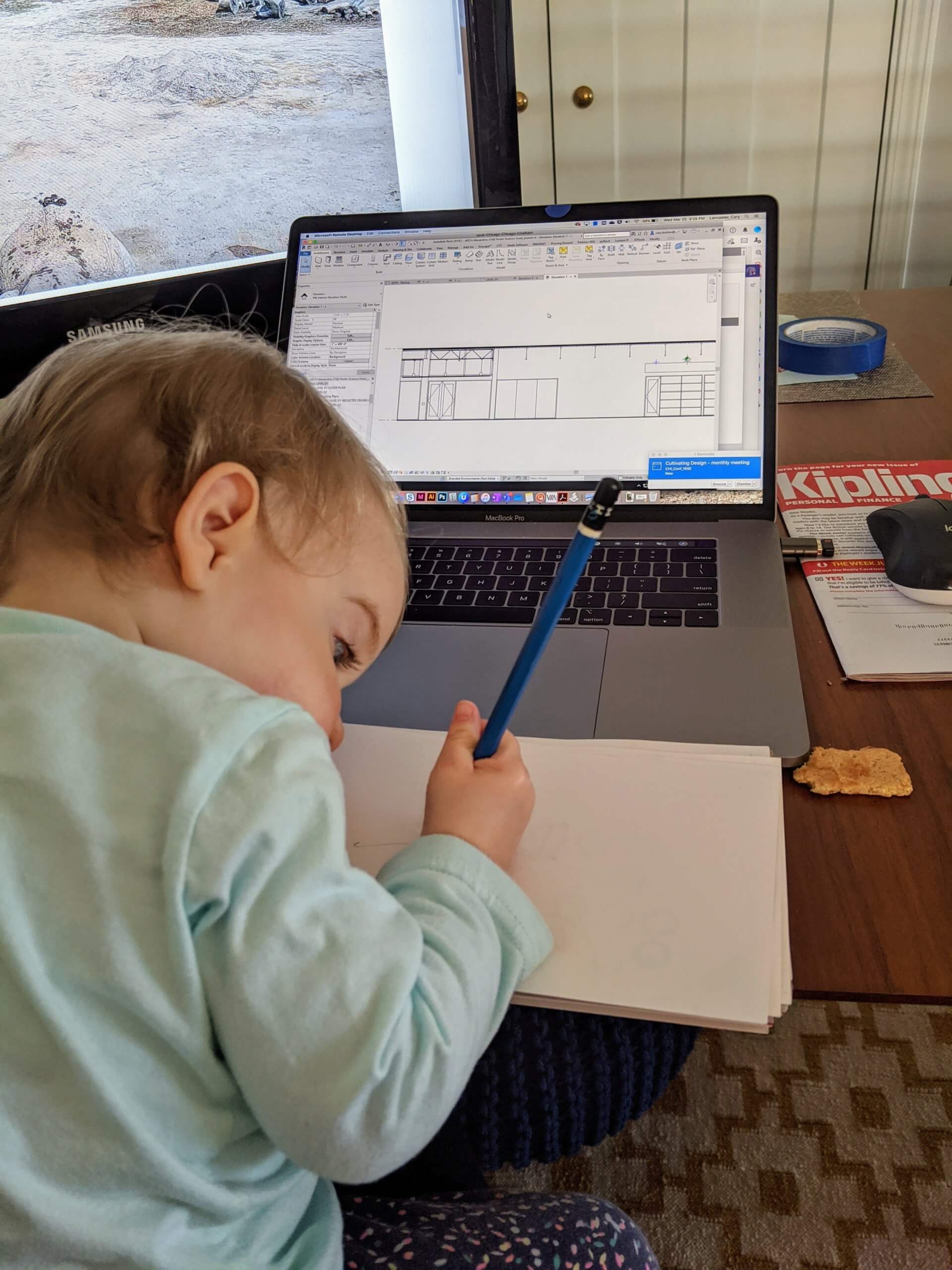
Scripting the Unscripted
Our digital platform has brought so many designers, team members, and leaders into greater synergy, even without physical proximity. We’re conversing in meaningful ways with a wider net of colleagues every day, at just the touch of a button and without the hassles of travel. However, while digital tools like Miro can replicate the feel of a collaborative whiteboard or project room, our virtual experience lacks what Bussard refers to as “glass of water” interactions. “In the studio, I would have five, six organic conversations just in the time it takes to get a glass of water from the kitchen,” he says. Others, including Portela, agreed: “How can we replace, or cultivate, the ‘tap on the shoulder’ sort of amicability that we once had?” asks Portela. While we can “see” which of our colleagues are online, there is a layer of formality in “reaching out” and requesting a check-in or initiating a conversation when we can’t physically read things like body language. Nevertheless, our designers see a promising future where our virtual platforms, and the EQ skills we acquire alongside them, can get closer to that physical reality.
“There is universal acknowledgment of the power of our platform, and that investment in our digital tools is invaluable,” says Logan. By ensuring that our virtually connected teams have the resources and support they need—as well as input and recommendations from all practitioners—there is great potential for our tools to bridge even more gaps. Just as how a few months ago, none of us anticipating needing to rely on the tools that constitute our daily lives today. “By continuing to build internally, we can realize our own customized tools that truly work like we work,” Krenek says.
“But what’s the tipping point?”
As many of our studios are in the process of gradually returning to the workplace, one question designers across the firm are asking is, what aspects of the design process necessitate gathering in the studio, or around a sketch? “Really, we’re always asking, ‘what’s the tipping point?’ when we need to call a team in, rather than relying on virtual tools,” says Portela. The reality? The “tipping point” is different for everyone, and every team, because each of our designers has their own individual style, strength and weakness. We all miss the communal feel of the office space to varying degrees, but other than social fulfilment, but we’re still determining which processes and activities the studio facilitates best. “It always comes back to the work,” says Krenek. “It comes down to designers putting their heads together in a jam session, making music.”
